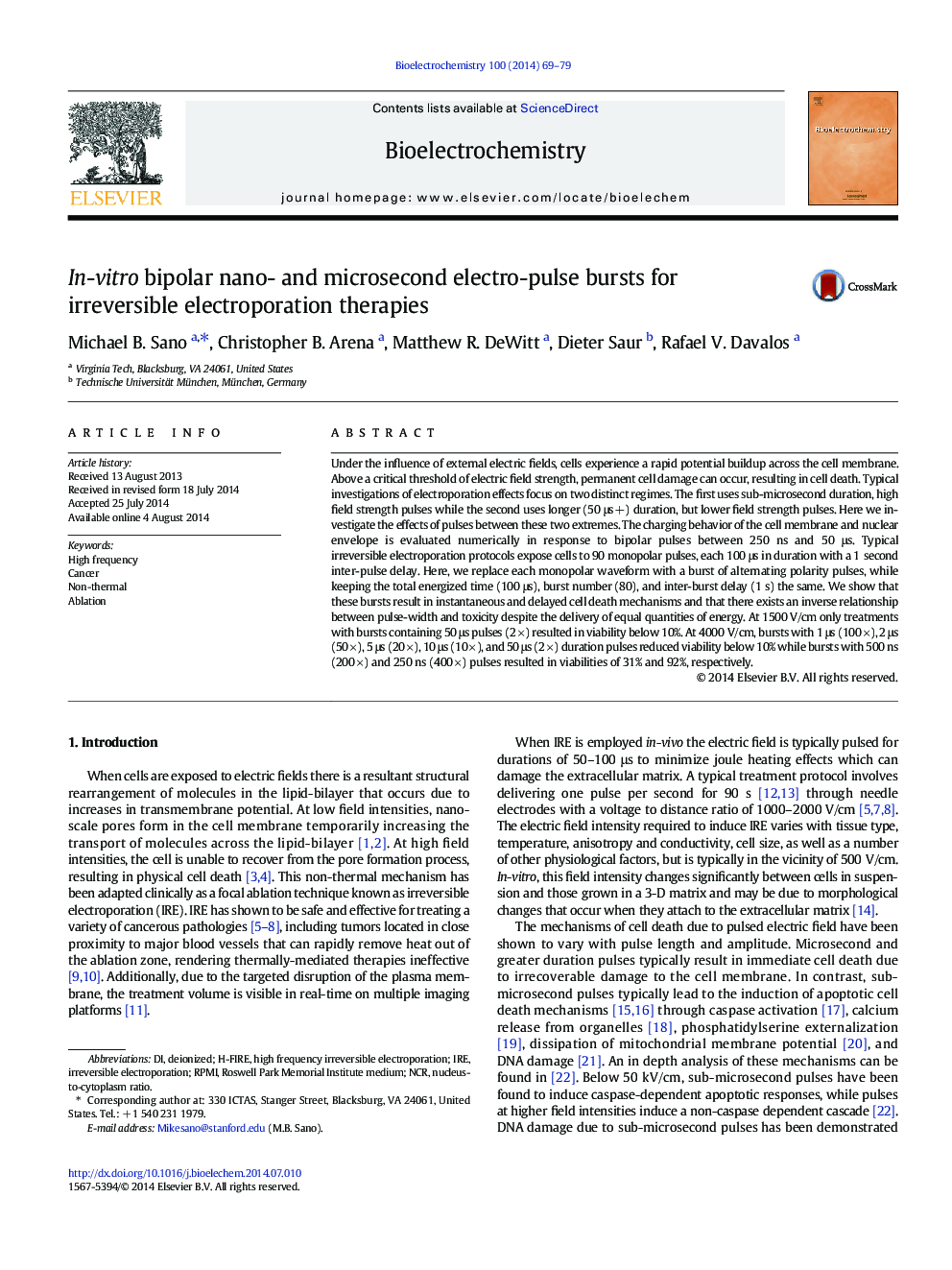| کد مقاله | کد نشریه | سال انتشار | مقاله انگلیسی | نسخه تمام متن |
|---|---|---|---|---|
| 1268093 | 1496912 | 2014 | 11 صفحه PDF | دانلود رایگان |

• Investigation of electrical pulses with duration between 250 ns and 50 µs.
• Bipolar bursts result in instantaneous and delayed cell death.
• Intracellular effects can be optimized by adjusting pulse parameters.
• Viability has inverse correlation with pulse width despite equal energy delivery.
• At 4000 V/cm, 250 ns bursts had no impact on viability, 1-50 µs bursts < 5% viable.
Under the influence of external electric fields, cells experience a rapid potential buildup across the cell membrane. Above a critical threshold of electric field strength, permanent cell damage can occur, resulting in cell death. Typical investigations of electroporation effects focus on two distinct regimes. The first uses sub-microsecond duration, high field strength pulses while the second uses longer (50 μs +) duration, but lower field strength pulses. Here we investigate the effects of pulses between these two extremes. The charging behavior of the cell membrane and nuclear envelope is evaluated numerically in response to bipolar pulses between 250 ns and 50 μs. Typical irreversible electroporation protocols expose cells to 90 monopolar pulses, each 100 μs in duration with a 1 second inter-pulse delay. Here, we replace each monopolar waveform with a burst of alternating polarity pulses, while keeping the total energized time (100 μs), burst number (80), and inter-burst delay (1 s) the same. We show that these bursts result in instantaneous and delayed cell death mechanisms and that there exists an inverse relationship between pulse-width and toxicity despite the delivery of equal quantities of energy. At 1500 V/cm only treatments with bursts containing 50 μs pulses (2 ×) resulted in viability below 10%. At 4000 V/cm, bursts with 1 μs (100 ×), 2 μs (50 ×), 5 μs (20 ×), 10 μs (10 ×), and 50 μs (2 ×) duration pulses reduced viability below 10% while bursts with 500 ns (200 ×) and 250 ns (400 ×) pulses resulted in viabilities of 31% and 92%, respectively.
Journal: Bioelectrochemistry - Volume 100, December 2014, Pages 69–79